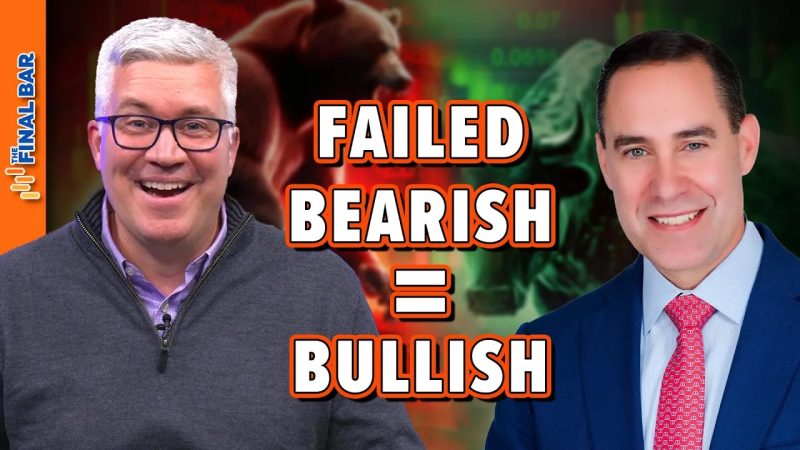Failed Bearish Patterns are Bullish for S&P 500!
Understanding market patterns and trends is crucial for successful trading and investment strategies. In the world of technical analysis, bearish patterns are often seen as signs of potential downward price movements. However, when these bearish patterns fail to materialize, they can actually be interpreted as a bullish signal for the market. This is particularly true for the S&P 500 index, one of the most widely followed indicators of the U.S. stock market.
One of the key reasons why failed bearish patterns can be bullish for the S&P 500 is the concept of trapped traders. When traders anticipate a bearish trend and position themselves accordingly, they often set stop-loss orders to limit potential losses. If the market fails to move in the expected direction and instead reverses, these stop-loss orders can trigger a rapid influx of buying activity, known as a short squeeze. This sudden surge in buying pressure can push prices higher, fueling a bullish rally.
In addition, failed bearish patterns can create a sense of disbelief and skepticism among market participants. When a widely anticipated bearish signal proves to be inaccurate, it can lead to a shift in sentiment as traders and investors reevaluate their positions. This shift in sentiment can contribute to a bullish market environment as confidence is restored and buying interest increases.
Another factor that can contribute to a bullish scenario following a failed bearish pattern is the presence of fundamental support. If the underlying economic conditions and corporate earnings remain strong, any temporary bearish signals may be quickly overshadowed by positive news and data. In this case, investors may view the failed bearish pattern as a buying opportunity rather than a harbinger of a market downturn.
Moreover, the idiosyncrasies of the S&P 500 index itself can play a role in reversing bearish expectations. As a capitalization-weighted index comprising 500 of the largest publicly traded companies in the U.S., the S&P 500 is heavily influenced by the performance of mega-cap companies. If these key companies beat earnings expectations or announce positive developments, their stock prices can drive the index higher, even in the face of bearish technical signals.
It is important to note that while failed bearish patterns can signal bullish momentum for the S&P 500, they are not foolproof indicators. Market dynamics are complex and multifaceted, and multiple factors can influence price movements. Traders and investors should always conduct thorough analysis and consider a range of factors before making trading decisions.
In conclusion, failed bearish patterns can provide valuable insights into market sentiment and potential price movements. When interpreting these patterns in the context of the S&P 500 index, traders should consider the impact of trapped traders, shifting sentiment, fundamental support, and the unique characteristics of the index itself. By keeping a close eye on both technical and fundamental factors, traders can better navigate the dynamic landscape of the stock market and capitalize on bullish opportunities that arise from failed bearish patterns.

